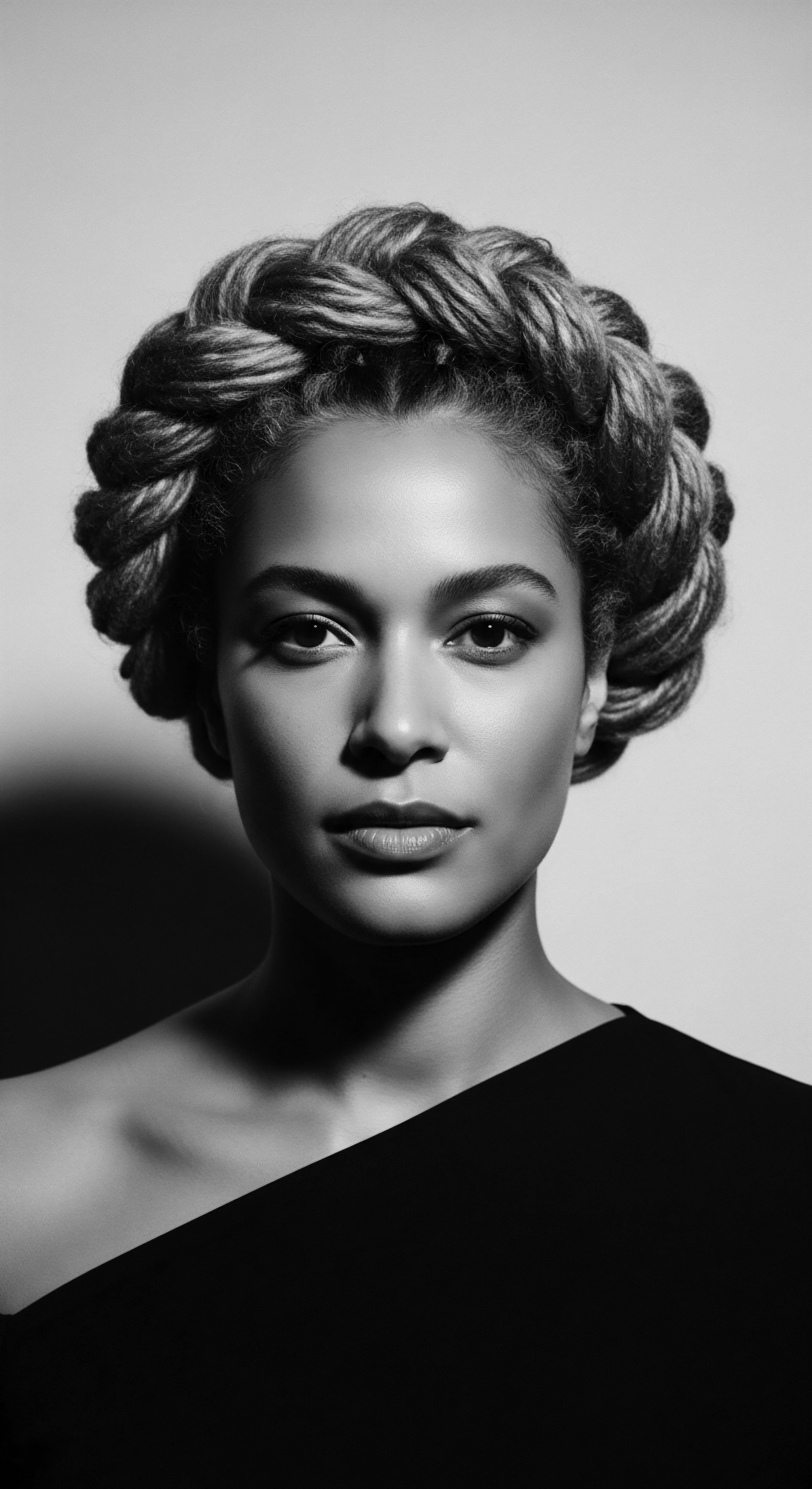
Roots
The very strands that crown us, in their glorious coiled configurations, are living archives. They hold within their helical memory the whispers of countless generations, a profound testament to ancestral ingenuity and a vibrant continuum of being. To contemplate whether age-old customs can enrich contemporary routines for textured hair is to listen to the echoes from the source itself—the primal rhythm of our biology intertwined with the communal heartbeat of our forebears.
It is a dialogue between the cellular architecture of a curl and the enduring wisdom passed from hand to hand, from elder to youth, across continents and through the crucible of time. Every kink, every wave, every coil bears the indelible mark of journeys undertaken and resilience forged.
Our textured hair, with its distinctive elliptical follicle and varied curl patterns, is a biological marvel. This unique structure, a genetic legacy, stands as a testament to evolutionary adaptation, specifically linked to the origins of early human ancestors on the African continent. Researchers propose that the very spiral shape of Afro-textured hair facilitated air circulation to the scalp while offering protection from intense ultraviolet radiation, a biological shield honed over millennia (EBSCO Research Starters, 2024).
This understanding forms the foundational layer for any true engagement with textured hair care. It tells us that these tresses were never simply adornments; they were, from their genesis, protective and communicative, a vital extension of self within environment.

Hair Anatomy and Physiology from an Ancestral and Modern Scientific View
To truly grasp the mechanisms through which traditional practices might support modern textured hair care, one must first consider the inherent properties of the hair itself. Each strand of textured hair originates from an elliptical follicle, causing it to grow in a spring-like or zig-zag pattern. This helical growth, while visually captivating, introduces points of vulnerability at each curve or bend, making it more susceptible to dryness and mechanical stress compared to straighter hair types.
The outer cuticle layer, responsible for protecting the inner cortex, often sits in a raised position on textured strands, leading to a greater propensity for moisture loss. It is a paradox of inherent beauty and intrinsic fragility, a delicate balance that ancestral practices seemed to intuit and address.
Modern science confirms what many traditional caretakers instinctively understood. Studies on the lipid composition within varied hair types, for instance, note that Afro-textured hair, despite its tendency towards dryness on the surface, possesses a remarkably high overall lipid content internally—quantities estimated at 2.5 to 3.2 times greater than European or Asian hair, respectively (Preprints.org, 2024). This suggests a built-in reservoir, yet this lipid richness does not always translate to external lubrication, especially given the increased surface area and lifted cuticles. The challenge then becomes one of preservation and replenishment, a task to which historical methodologies often devoted themselves with profound dedication.

How Does Ancient Biology Inform Current Care?
The very essence of a textured strand, its spiraled form, presents unique demands for moisture and gentle handling. Traditional methods, spanning continents and centuries, frequently centered on infusing and sealing moisture. They often utilized a spectrum of plant-derived emollients and humectants. Think of the rich butters and oils sourced from local botanicals—shea, coconut, palm kernel—applied not only for cosmetic appeal but for their profound barrier-forming and conditioning properties.
These applications, often combined with protective styles, worked in concert with the hair’s natural inclination to lose water, creating a micro-environment that honored its biological needs. This ancestral approach offers a crucial blueprint for modern regimens, suggesting that working in concert with the hair’s inherent structure, rather than against it, promises genuine benefits.
The fundamental biology of textured hair, characterized by its unique coiled structure and inherent moisture dynamics, underscores the wisdom embedded within traditional care practices.
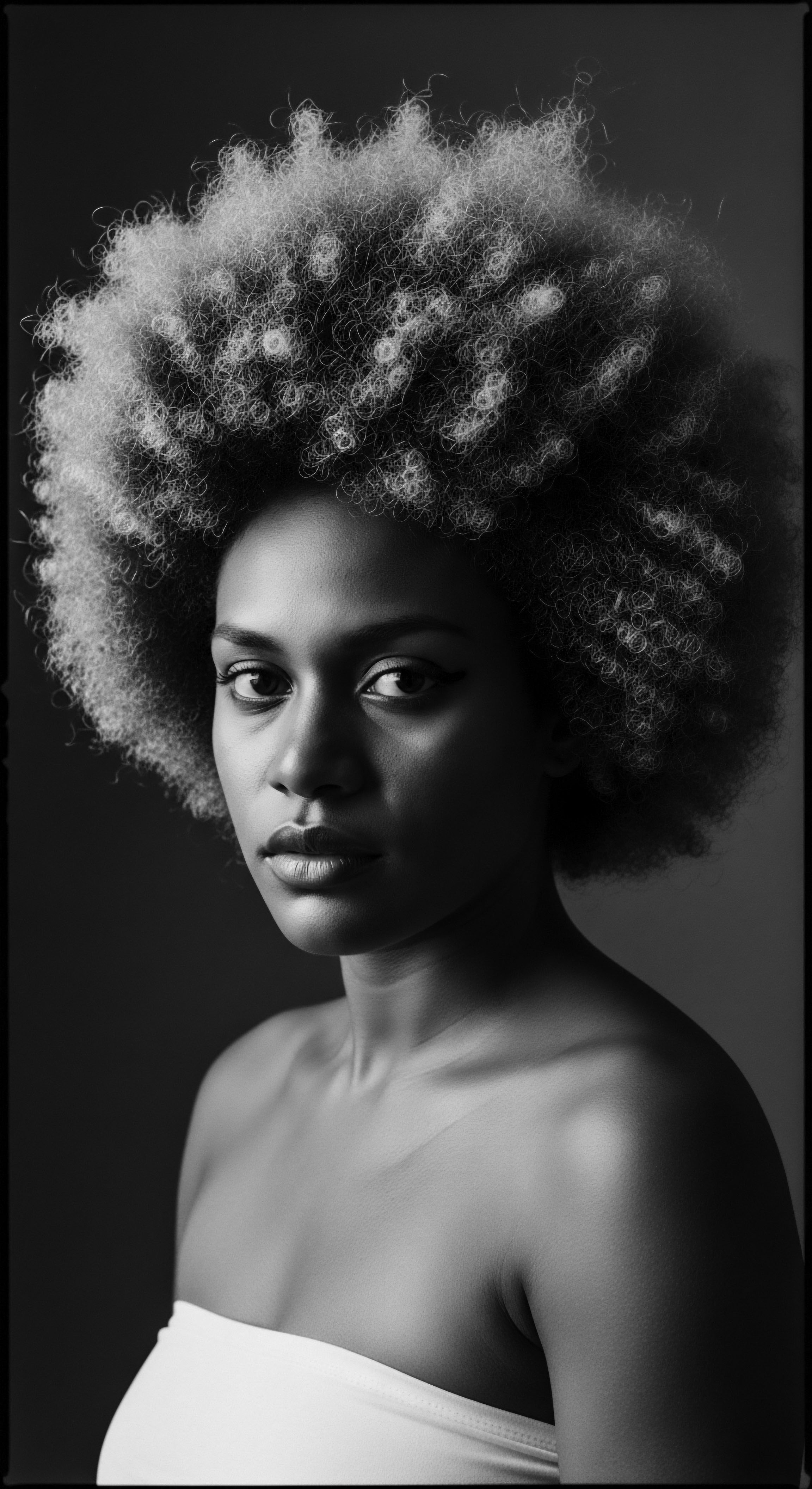
Textured Hair Classification Systems and Their Cultural Origins
The language we employ to describe textured hair often carries the weight of history, some terms rooted in empirical observation, others in fraught societal constructs. While contemporary systems like the Andre Walker typing (1A-4C) attempt to categorize curl patterns, their very existence often sidesteps the older, culturally specific nomenclature that once defined hair within its communal context. Prior to the widespread adoption of these numeric systems, descriptions were often qualitative, speaking to the aesthetic and symbolic value within a community rather than solely to a scientific metric of coil diameter.
In many African societies, hair was not merely categorized by curl tightness but by its texture, its luster, its ability to hold a style, and its association with social standing or ritual purpose. These were not arbitrary distinctions; they were rooted in a deep understanding of the hair’s behavior and its role within a living cultural tapestry. The evolution of these classification methods, from descriptive to numeric, reflects a shift in perspective—from an inherent understanding of hair as a living, symbolic entity to its reduction as a measurable, often commodified, attribute.

The Essential Lexicon of Textured Hair
The language associated with textured hair care has always been vibrant, a lexicon that bridges the biological and the cultural. Terms like “kinky,” once used pejoratively, have been reclaimed by many within the textured hair community as descriptions of natural, beautiful coil patterns. This linguistic reclamation is a powerful act of heritage preservation. Beyond these broad descriptors, traditional practices introduced a glossary of their own.
- Irun Kiko ❉ A Yoruba term from Nigeria, referencing the hair threading technique dating back to the 15th century, a method for stretching and protecting hair from breakage (Obscure Histories, 2024).
- Otjize ❉ The distinctive red ochre paste of Namibia’s Himba people, a mixture of butterfat and ochre applied to hair for protection from sun and insects, deeply connected to their land and ancestors (Bebrų Kosmetika, 2024).
- Chebe ❉ A powder made from dried and ground seeds of the Chébé plant, used by women of the Bassara/Baggara Arab tribe in Chad for promoting long, lustrous hair by preventing breakage (Obscure Histories, 2024).
These terms speak to specific methods, ingredients, and the very philosophy of care. When modern regimens acknowledge and incorporate such ancestral lexicon, they do more than simply borrow a technique; they participate in a broader conversation, honoring the deep historical roots from which these practices spring.

Hair Growth Cycles and Influencing Factors
The journey of a hair strand, from its anagen (growth) phase to its telogen (resting) phase, is a universal biological rhythm. However, for textured hair, certain environmental and historical factors have influenced this cycle. Climate, nutrition, and even stress, whether ecological or societal, have always played a part in the health and vitality of hair.
In ancestral African communities, diets rich in plant-based nutrients, often localized to specific regions, naturally provided many of the building blocks for healthy hair. The wisdom of consuming wholesome foods for overall wellness often translated into robust hair growth.
Furthermore, communal practices around hair, where care was a shared activity, could also alleviate some of the individual burdens of maintenance, indirectly contributing to less mechanical stress and potential breakage. The rhythmic combing, oiling, and styling, often performed with a gentle touch, would have minimized damage that could truncate the growth cycle. These intertwined factors—diet, community, and careful handling—created a symbiotic relationship with the hair’s natural growth patterns, fostering longevity and strength.
Understanding the intersection of biology and tradition offers a framework for how modern textured hair regimens can genuinely benefit from ancestral wisdom. It allows us to view traditional practices not as mere relics of the past but as living, breathing solutions, refined over centuries through intimate knowledge of the hair itself.

Ritual
The tender thread of care, stretching back through time, links the present moment to ancient hearths where hands ministered to hair with purpose and devotion. Traditional practices were often more than simple acts of beautification; they were rituals, deeply embedded in community life and the transmission of knowledge. These customs, sometimes communal, sometimes sacred, always held significance beyond the purely aesthetic.
They were expressions of identity, social markers, and spiritual conduits. The question becomes, then, how these deeply ingrained rituals can inform and strengthen the styling processes of today.
The art of styling textured hair is as old as the hair itself. From the intricate cornrows depicted on ancient Egyptian artifacts to the elaborate coil arrangements of West African tribes, hair has always served as a canvas for cultural expression (Afriklens, 2024). These historical styles were not accidental; they were the product of skilled hands, passed-down techniques, and a profound understanding of hair’s unique properties. Today’s stylists and enthusiasts stand on the shoulders of these pioneers, perhaps unknowingly replicating gestures and principles refined over millennia.

Protective Styling Encyclopedia and the Ancestral Roots
Protective styles—those designs that tuck away fragile ends and minimize daily manipulation—are a cornerstone of textured hair care today. Yet, their conceptual origins are ancient. Consider the practice of braiding, a method found across various African cultures for centuries. Braiding was not merely a decorative art.
It served as a means of communication, indicating social status, marital availability, age, or tribal affiliation (Okan Africa Blog, 2020). Beyond their social messages, these elaborate braided styles offered practical advantages. They shielded the hair from harsh elements, reduced tangling, and allowed for length preservation by minimizing everyday wear and tear.
The profound historical instance of braids serving as more than just adornment speaks volumes. During the harrowing era of the transatlantic trade, enslaved Africans, stripped of nearly everything, found ingenious ways to preserve fragments of their identity and hope. Some accounts suggest that enslaved women would braid rice grains into their children’s hair before boarding slave ships, providing sustenance for the perilous journey.
More strikingly, certain intricate braid patterns served as maps to freedom, encoding escape routes and vital geographical information, passed from one to another in whispered exchanges and shared touch (Afriklens, 2024). This potent example illustrates that protective styling was, at times, a matter of survival, a silent language of resistance and cultural continuity.
This powerful narrative highlights the inherent protective quality of these styles, now often replicated in modern forms like box braids, twists, and locs. The ancestral understanding that minimizing exposure and manipulation contributes to hair health is a direct transfer of wisdom that resonates with scientific principles of reducing breakage and fostering growth.

How Did Traditional Braiding Techniques Serve as Both Art and Function?
Ancient braiding techniques, far from being simplistic, often displayed remarkable engineering. The tension, the sectioning, the direction of the braid—all were carefully considered to create enduring styles that protected the hair while conveying complex social messages. The Fulani braids , for instance, originating from the Fulani people of West Africa, are characterized by cornrows that often run from back to front, adorned with beads, cowrie shells, or coins, symbolizing wealth or marital status (OkayAfrica, 2023).
These styles provided ventilation, evenly distributed tension, and kept the hair contained, preventing environmental damage. This duality of art and function, deeply rooted in a connection to the environment and social structures, is a valuable lesson for contemporary protective styling.

Natural Styling and Definition Techniques
For millennia, textured hair was styled without the aid of chemical alterations or excessive heat. Definition was achieved through skillful manipulation, moisture, and the use of natural substances. The ‘wash and go’ of today, while a contemporary term, conceptually mirrors ancient methods of simply cleansing and allowing the hair’s natural pattern to emerge, perhaps aided by specific plant gels or oils.
Consider the widespread use of natural clays and plant extracts as conditioning and defining agents. Rhassoul clay, for example, used for centuries in North Africa, is renowned for its ability to cleanse while preserving moisture, lending a soft, defined feel to coils. Similarly, mucilage-rich plants like okra or flaxseed , when prepared into gels, provided slip for detangling and offered light hold for setting curls in place. These methods focused on enhancing the hair’s natural inclination, rather than forcing it into an unnatural shape.

Wigs and Hair Extensions Mastery
The concept of augmenting natural hair with extensions is not a modern invention; it has a venerable history across many cultures, particularly in Africa. Ancient Egyptians, for instance, wore elaborate wigs made from human hair, wool, or vegetable fibers, often adorned with jewels and gold (Happi, 2021). These were not simply fashion statements; they provided protection from the sun, signified social status, and were integral to religious ceremonies.
In various West African societies, hair extensions were incorporated into braided styles, adding length and volume, or creating more intricate, artistic expressions. These extensions, often sourced from natural fibers or even human hair, were seamlessly integrated using methods that are precursors to today’s weaving techniques. This historical context reminds us that extensions, when properly applied and cared for, can be a form of protective styling, allowing natural hair a respite from manipulation. It also reinforces the idea that the desire for versatility and adornment is a deeply human, historically resonant impulse.
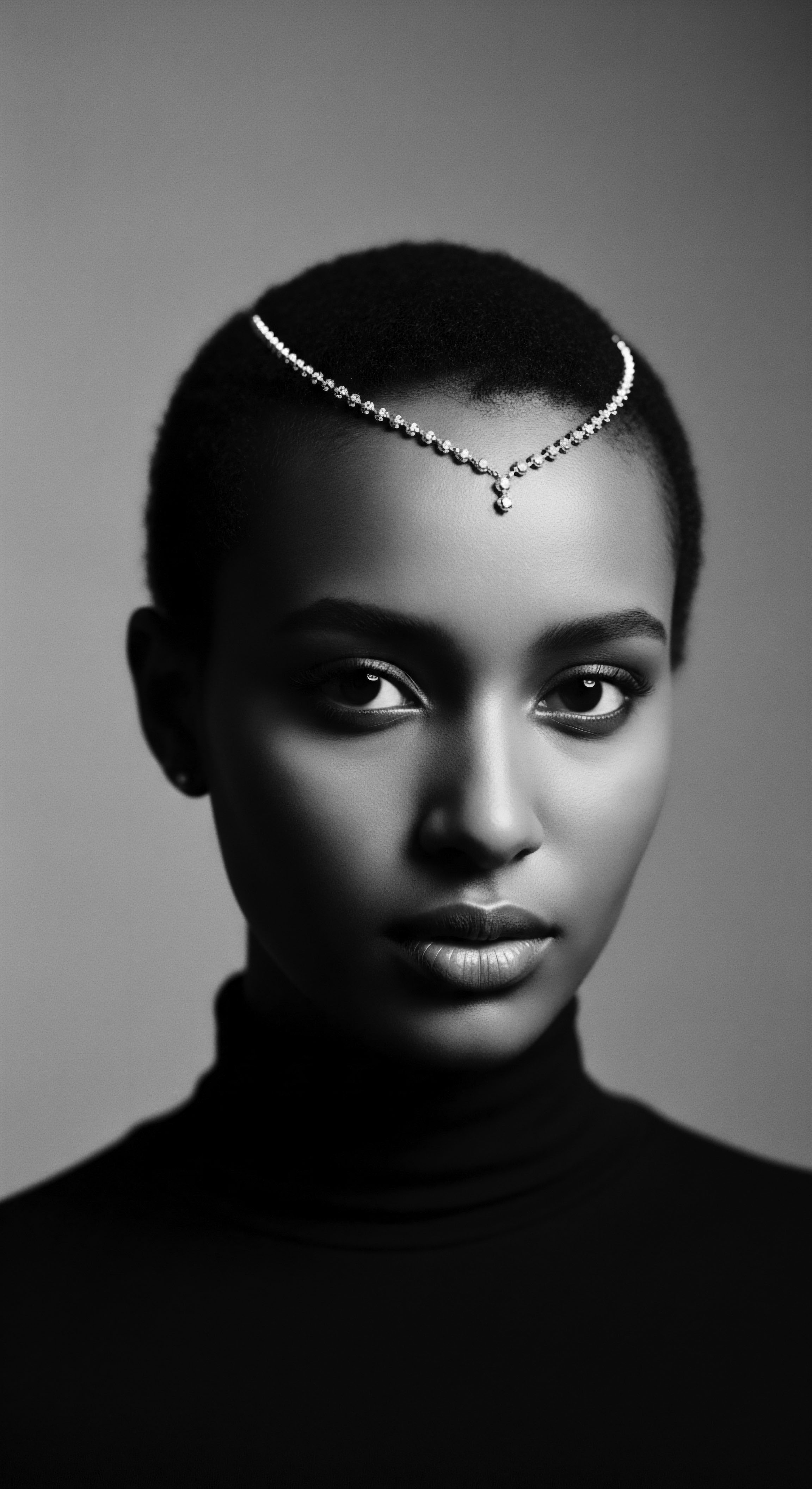
Heat Styling and Thermal Reconditioning
The historical relationship between textured hair and heat is complex, often tinged with the societal pressures that arose during and after the transatlantic trade. While ancient cultures primarily relied on minimal heat or sun drying for styling, the post-slavery era saw the introduction of rudimentary heat tools, such as the hot comb, as means to achieve straightened textures (PubMed Central, 2010). This marked a significant departure from traditional practices, driven by external beauty standards.
Today, thermal reconditioning and heat styling offer versatility but come with the inherent risk of damage. The wisdom from traditional care practices, which prioritized minimal intervention and preservation of the hair’s natural state, serves as a crucial counterpoint. It suggests that while modern tools offer options, they must be approached with caution and informed by the ancestral understanding of hair’s intrinsic fragility. The focus then shifts to protecting the hair during heat application, using natural heat protectants (like certain oils) that echo the barrier functions of traditional emollients.
Traditional styling, rooted in function and cultural expression, offers a blueprint for modern protective methods, emphasizing gentle care and natural enhancement.
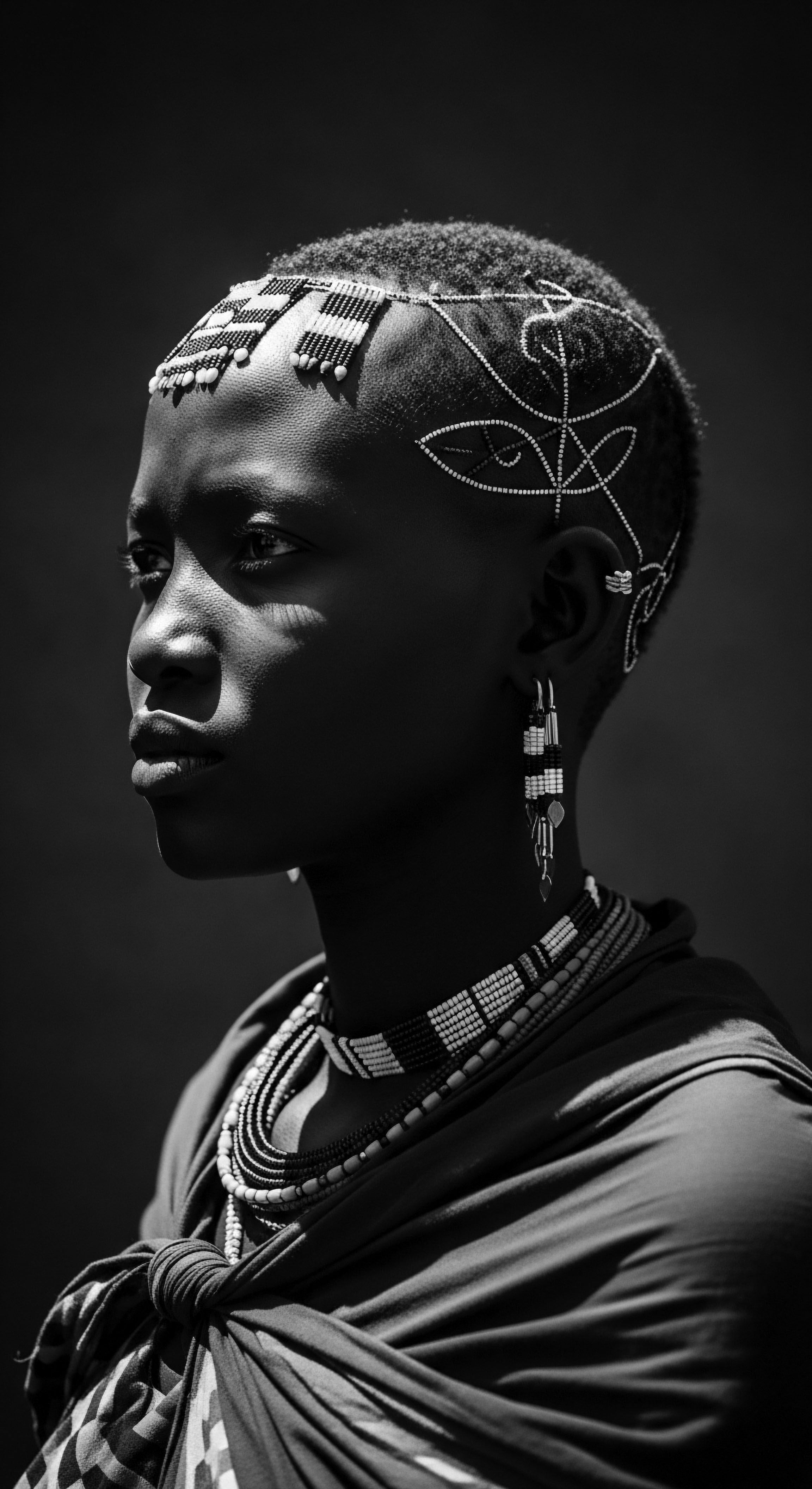
The Complete Textured Hair Toolkit
The tools employed in traditional hair care were often extensions of the hands themselves, crafted from natural materials and designed for gentle manipulation.
| Tool Category Combs |
| Traditional Examples and Cultural Use Wooden combs ❉ Carved from local timbers, often wide-toothed for detangling coiled strands with minimal breakage. Some held symbolic meaning or were family heirlooms. |
| Modern Counterparts and Their Link to Heritage Wide-toothed combs & detangling brushes ❉ Designed to minimize stress on fragile textured strands, echoing the gentle approach of historical wooden tools. |
| Tool Category Hair Adornments |
| Traditional Examples and Cultural Use Cowrie shells, beads, precious metals ❉ Used not only for embellishment but also to denote status, wealth, or spiritual connections within various African tribes (Okan Africa Blog, 2020). |
| Modern Counterparts and Their Link to Heritage Decorative beads, clips, wraps ❉ Contemporary accessories that continue the legacy of adornment, often reflecting personal style and cultural pride. |
| Tool Category Styling Aids |
| Traditional Examples and Cultural Use Gourds, clay pots ❉ Used for mixing natural ingredients like plant extracts, oils, and butters for hair treatments and styling pastes. |
| Modern Counterparts and Their Link to Heritage Mixing bowls, applicators ❉ Simple, functional tools for preparing and applying modern hair masks, deep conditioners, and styling creams, continuing the practical legacy. |
| Tool Category The evolution of hair tools demonstrates a persistent need for implements that respect the unique qualities of textured hair, often finding parallels in ancestral design. |
The tools, like the techniques, underscore a deep respect for the hair’s integrity. Modern tools, from wide-tooth combs to satin-lined bonnets, are, in many ways, refinements of these ancestral implements, still aiming for the same outcome ❉ gentle detangling, effective product distribution, and sustained protection.

Relay
The cadence of care, a rhythmic pulse spanning generations, does not simply echo from the past; it lives, breathes, and continually shapes the present and the future. Our contemporary understanding of textured hair health, increasingly informed by scientific insight, finds its deepest resonance in the enduring regimens of our ancestors. These were not random acts but carefully observed sequences, a wisdom cultivated through intimate acquaintance with hair’s every temperament. The interplay of ancient practices and current understanding allows us to envision a path forward where our personal regimens become truly holistic, deeply rooted in a shared heritage.
The journey of self-care for textured hair is a profound connection to an inherited legacy. It invites us to examine how daily choices, from the ingredients we select to our nighttime preparations, carry the weight and wisdom of those who came before us. This is where modern scientific validation meets time-honored custom, creating a potent synergy.

Building Personalized Textured Hair Regimens
Creating a regimen that genuinely serves textured hair necessitates a deep understanding of its unique needs, a principle that guided ancestral care. Personalization was not a buzzword in ancient communities; it was inherent to practice. Caretakers often possessed intimate knowledge of an individual’s hair, its particular patterns, its tendencies toward dryness or oiliness, its resilience. This bespoke approach was passed down through observation and mentorship, creating routines tailored to the person, not a generic type.
Today, we recognize that what works for one curl pattern might not suit another, or what benefits a certain porosity might harm a different one. This is a direct parallel to the ancestral method. By observing our own hair, understanding its response to various agents and manipulations, we are continuing this tradition of personalized care.
It is a return to listening to the hair itself, much as our foremothers did, rather than adhering blindly to universal dictates. The most beneficial modern regimens are those that adapt ancestral wisdom—the principles of moisture preservation, gentle detangling, and scalp health—to the specific needs of the individual, perhaps validated by current dermatological understanding.

Do Traditional Ingredients Offer Superior Efficacy for Hair Wellness?
Many modern hair formulations now incorporate ingredients long revered in traditional textured hair care. Consider shea butter , a rich emollient sourced from the shea tree native to West Africa. For centuries, it has been a staple, used to seal moisture, soften strands, and protect the scalp (Omez Beauty Products, 2024). Its effectiveness lies in its unique fatty acid profile, which scientific analyses now confirm offers profound conditioning properties.
Similarly, coconut oil , widely utilized across various cultures for its penetrating qualities, has been shown to reduce protein loss in hair (Cécred, 2025). These are not simply folk remedies; they are botanical powerhouses, their efficacy often explained and validated by contemporary scientific scrutiny.
The resurgence of interest in these natural elements underscores a collective yearning for ingredients that are not only effective but also carry a cultural memory. When we choose a product containing these traditional components, we are, in a sense, reaching back, tapping into a collective ancestral knowledge system that prioritized nature’s offerings.

The Nighttime Sanctuary ❉ Essential Sleep Protection and Bonnet Wisdom
The simple act of protecting hair at night, often with wraps or head coverings, is a tradition steeped in practicality and reverence. This is not a recent innovation for preserving a style; it is an age-old custom. Head coverings held various meanings across African societies—from indicators of marital status or spiritual devotion to practical means of shielding hair from dust and environmental wear (Okan Africa Blog, 2020). The underlying principle was preservation, both of the physical hair and its symbolic meaning.
The modern satin bonnet or silk scarf directly descends from this ancestral wisdom. These soft, smooth fabrics minimize friction against pillows, preventing tangles, breakage, and moisture loss during sleep. The choice of material is key; cotton, with its absorbent nature and rougher fibers, can strip hair of moisture and create frizz.
The satin or silk, however, allows hair to glide, maintaining its hydration and structural integrity. This transition from a culturally significant headwrap to a utilitarian sleep bonnet illustrates how functional wisdom persists, adapted for modern lives while retaining its core protective purpose.
The daily rituals of textured hair care, from ingredient choices to nighttime wraps, are living continuations of ancestral wisdom, proving that enduring practices truly shape modern wellness.

Textured Hair Problem Solving Compendium
Challenges like dryness, breakage, and scalp irritation are not new to textured hair. Ancestral communities developed their own compendiums of solutions, often relying on observation, natural remedies, and the accumulated knowledge of generations. For instance, the use of herbal rinses and medicinal plant infusions for scalp ailments was widespread. Extracts from specific barks, leaves, or roots, prepared into decoctions, addressed issues like itching or flaking, drawing on the plants’ anti-inflammatory or antimicrobial properties.
The collective wisdom often understood the links between internal well-being and hair health. A vibrant scalp and thriving hair were viewed as reflections of a balanced internal state. This holistic understanding meant that remedies might not only address external symptoms but also consider dietary or lifestyle factors. When contemporary regimens incorporate elements like scalp massages (to stimulate blood flow, a practice rooted in Ayurvedic and African traditions) or focus on nutrient-rich diets, they are, in essence, re-activating these deep ancestral solutions.
A distressing contrast emerges when considering certain modern interventions. A 2018 study published in Environmental Research, spotlighted by the Silent Spring Institute, revealed that a substantial portion of hair products marketed to Black women, often those designed to chemically alter hair texture, contain endocrine-disrupting chemicals (EDCs). The study reported that approximately 50% of products marketed to Black women contained these EDCs, compared to about 7% in products marketed to white women. These chemicals have been linked to significant health concerns, including early menstruation, uterine fibroids, and breast cancer (Helm, 2018).
This stark reality underscores the critical importance of revisiting and prioritizing the natural, non-toxic approaches central to ancestral hair care. It frames traditional practices not merely as enhancements but as a vital return to fundamental wellness and safety.

Holistic Influences on Hair Health
Beyond products and techniques, traditional hair care was often intertwined with a broader philosophy of well-being. It was recognized that hair health was not isolated but connected to physical, spiritual, and communal harmony.
- Community Care ❉ Hair grooming, particularly braiding, was a deeply communal activity in many African societies. It was a time for storytelling, sharing wisdom, and strengthening social bonds (Okan Africa Blog, 2020). This communal aspect, the shared touch and conversation, undeniably contributed to psychological well-being, which in turn reflects on physical health, including that of the hair.
- Spiritual Reverence ❉ For many African cultures, hair was considered sacred, a conduit to the divine or a symbol of life force (Bebrų Kosmetika, 2024). This reverence naturally led to gentle handling and intentional care, viewing the hair as a precious, living extension of self.
- Dietary Wisdom ❉ Ancestral diets, rich in local produce and whole foods, provided the necessary vitamins and minerals for robust hair growth. The link between internal nutrition and external vitality was often instinctively understood and honored through traditional eating habits.
Modern wellness movements often speak of ‘holistic’ approaches, and in the realm of textured hair care, this means looking beyond the superficial. It means recognizing that the health of a strand is affected by what we consume, how we manage stress, and the communal connections we maintain. This is precisely the wisdom that traditional practices have carried forward, a testament to their enduring and profound significance for our well-being.

Reflection
The journey through textured hair heritage reveals a profound truth ❉ the practices of our ancestors are not merely historical footnotes, but potent, living blueprints for genuine well-being. From the very biology of the coiled strand—a testament to sun-kissed plains and ancestral adaptation—to the communal rituals of tender hands braiding stories into hair, we witness a continuous, unbroken line of wisdom. This is the ‘Soul of a Strand’ ethos made manifest ❉ a recognition that our hair is a living, breathing archive of identity, resilience, and inherited genius.
To question whether traditional practices can enhance modern textured hair regimens is to receive an resounding affirmation. It is to acknowledge that these time-honored customs offer more than just beauty solutions; they bestow a deeper connection to self, to community, and to a legacy of defiance and grace. They remind us that the most authentic care arises from understanding the inherent nature of our hair, from respecting its vulnerabilities, and from nurturing it with components that are both gentle and profoundly effective.
The future of textured hair care lies not in discarding the past, but in drawing from its deep wellspring, allowing its ancient rhythms to guide our contemporary hands. This rich heritage stands as an eternal wellspring, providing both sustenance and direction for every strand’s continuing journey.
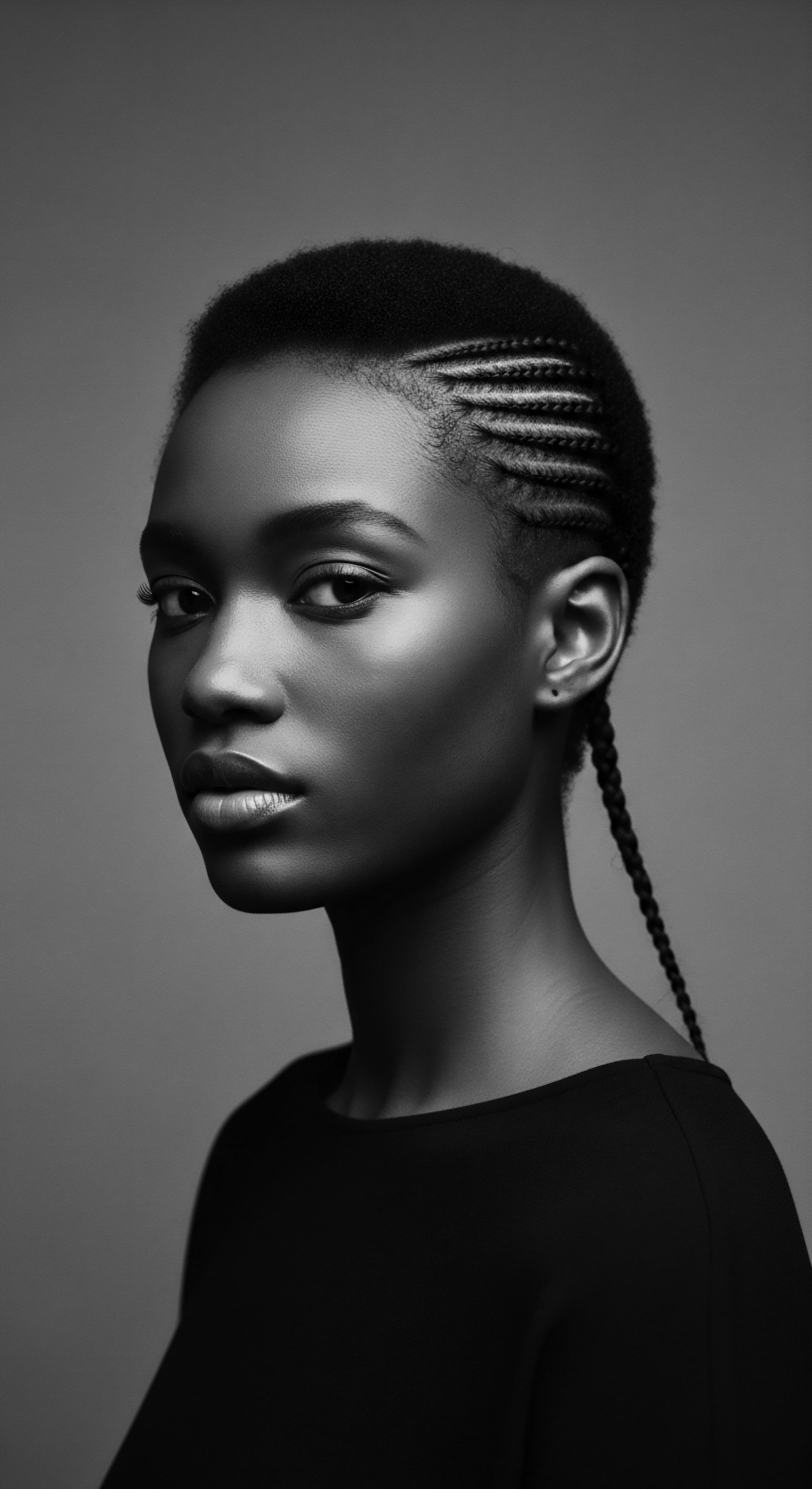
References
- Bebrų Kosmetika. (2024, August 23). The Power of Hair in African Folklore ❉ Rituals and Traditions.
- Cécred. (2025, April 15). Understanding Hair Oiling ❉ History, Benefits & More.
- EBSCO Research Starters. (2024). Afro-textured hair.
- Helm, J. (2018, April 30). Hair products for Black women contain mix of hazardous ingredients . YouTube.
- Happi. (2021, October 5). Hair Care Is a Focus in Africa.
- Obscure Histories. (2024, February 13). Ancient Gems ❉ A Historical Survey of African Beauty Techniques.
- Okan Africa Blog. (2020, October 8). The significance of hair in African culture.
- OkayAfrica. (2023, May 11). A Regional Walk Through The History of African Hair Braiding.
- Omez Beauty Products. (2024, October 8). The Cultural Significance of Natural Hair.
- Preprints.org. (2024, July 15). The Genomic Variation in Textured Hair ❉ Implications in Developing a Holistic Hair Care Routine.
- PubMed Central. (2010, October). Black women’s hair ❉ the main scalp dermatoses and aesthetic practices in women of African ethnicity.
- Afriklens. (2024, December 3). Natural African Haircare ❉ Celebrating the Afro and Braids.
